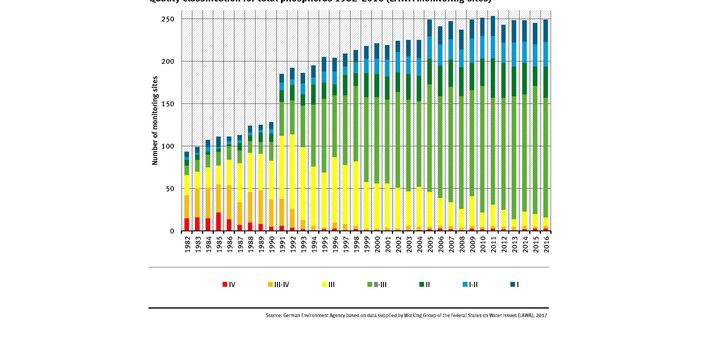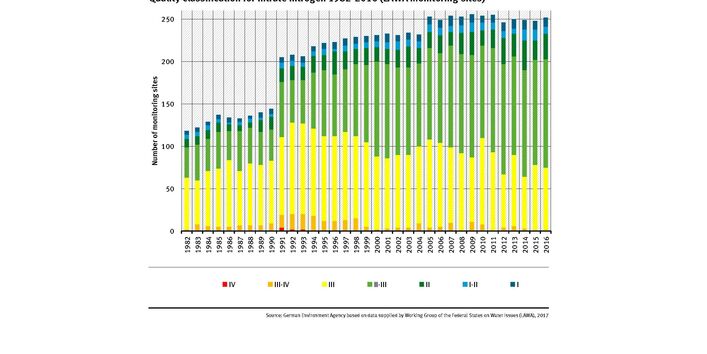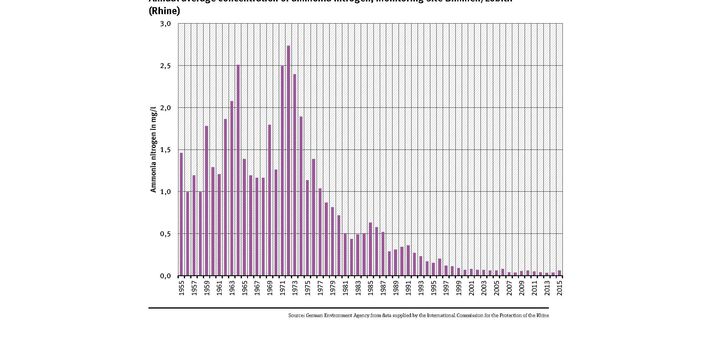Trend of nutrient concentration
The high levels of nutrient concentration is a reason for failing to achieve a “good ecological status”. There are changes to the natural biotic community.
Total phosphorous and nitrogen emissions into Germany’s watercourses have been substantially reduced thanks to the introduction of phosphate-free detergents, the closure of production facilities in the new Länder, the construction and modernisation of public and industrial wastewater treatment plants (construction of phosphate precipitation plants), and the greater number of households connected to wastewater treatment facilities. Today, agriculture is the principal source of nutrient loads in waterbodies, together with public wastewater treatment plants, power plants, transport and industrial operations.
The reduction in inputs is reflected in decreased concentration levels in rivers and streams. Concentrations of phosphorus and nitrogen compounds are influenced by flow rate. Flow rate numbers are not available for all monitoring sites, and therefore the measurement values cannot always be standardised to the flow rate. For hydrology, for example, values over ten years are combined into long-term series. This method is subsequently applied to the concentrations. The 90-percentile values for the three ten-year periods (1986-1995, 1996-2005 and 2006-2015) at LAWA monitoring sites for which data is available for at least five years are averaged out, so that changes in concentrations are less attributable to fluctuations in flow rate and more to inputs. Comparing the first two ten-year periods 1986-1995 and 1996-2005 reveals a sharp drop in phosphorus and ammonium concentrations, both in terms of the intensity of the decrease and the number of monitoring sites. While this continued in the third period in the case of ammonium, the decrease in phosphorus concentrations tailed off, and at some monitoring sites even increased slightly, but remained below the concentrations of the first period. Concentrations of nitrate decreased more slowly.






